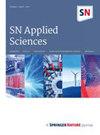Trends, forecasting and adaptation strategies of climate change in the middle and west regions of Iraq
IF 2.4
Q2 MULTIDISCIPLINARY SCIENCES
引用次数: 0
Abstract
Abstract Climate change has placed considerable pressure on the residential environment, agricultural, and water supplies in different areas of the world, especially arid places such as Iraq. Iraq is one of the five most vulnerable countries in the world to climate change, where it has been encountering extremes heat waves during the most recent decades resulted in drought, desertification, and rivers dried up, which led to thousands of hectares to turn dry and yellow. This study aims to investigate the trends of climate change in the middle and western regions of Iraq and future expectations. The daily maximum temperature, minimum temperature, and precipitation are downscaled using the Long Ashton Research Station Weather Generator (LARS-WG) model. Five General Circulation Models (GCMs) from Coupled Model Intercomparison Project Phase 5 (CMIP5) are employed for three future periods: the near future (2021–2040), medium future (2051–2070), and far future (2081–2100), based on two scenarios of the Representative Concentration Pathways (RCP4.5 and RCP8.5) for four selected meteorological stations representing the study area. The outcomes of the calibration and validation of the model supported its skill and reliability to downscale precipitation and temperature time series for statistical indices (R 2 , RMSE and MBE) ranging between (0.894–0.998), (0.1270–1.9274) and (− 0.6158 to 0.0008), respectively. The results showed that the average minimum and maximum annual temperatures will increase at all selected stations across the three future periods by between 0.94 and 4.98 °C by the end of the twenty-first century. Annual changes in precipitation tend generally towards increase for the study area by average (6.09–14.31%) for RCP4.5 and (11.25–20.97%) for RCP8.5 Compared to the historical data (1990–2020). These findings can contribute to become more acquainted with the effects of climate change on the environment and encourage managers and planners to come up with plans for mitigating and adapting to these effects. They can also serve as a guide for future management of water and agricultural resources in the study region.伊拉克中西部地区气候变化趋势、预测及适应策略
气候变化给世界不同地区的居住环境、农业和供水带来了相当大的压力,尤其是像伊拉克这样的干旱地区。伊拉克是世界上最易受气候变化影响的五个国家之一,近几十年来,伊拉克一直遭受极端热浪的袭击,导致干旱、荒漠化和河流干涸,导致数千公顷土地干涸和变黄。本研究旨在探讨伊拉克中西部地区气候变化趋势及未来预期。使用朗阿什顿研究站天气发生器(LARS-WG)模式对日最高气温、最低气温和降水进行了缩减。基于代表性浓度路径(RCP4.5和RCP8.5)两种情景,采用耦合模式比对项目第五阶段(CMIP5)的5个环流模式(GCMs)对未来3个时期:近期(2021-2040)、中期(2051-2070)和远期(2081-2100)进行了模拟。在r2、RMSE和MBE统计指标分别为(0.894 ~ 0.998)、(0.1270 ~ 1.9274)和(- 0.6158 ~ 0.0008)范围内,模型的校正和验证结果支持了模型在降水和温度时间序列降尺度上的技巧和可靠性。结果表明,到21世纪末,未来3个时期内所有站点的年平均最低和最高气温将升高0.94 ~ 4.98°C。与历史数据(1990—2020年)相比,研究区降水年变化总体呈平均增加(6.09 ~ 14.31%)和平均增加(11.25 ~ 20.97%)的趋势。这些发现有助于人们更加了解气候变化对环境的影响,并鼓励管理者和规划者提出减轻和适应这些影响的计划。它们也可以为研究区域未来的水资源和农业资源管理提供指导。
本文章由计算机程序翻译,如有差异,请以英文原文为准。
求助全文
约1分钟内获得全文
求助全文

 求助内容:
求助内容: 应助结果提醒方式:
应助结果提醒方式:


